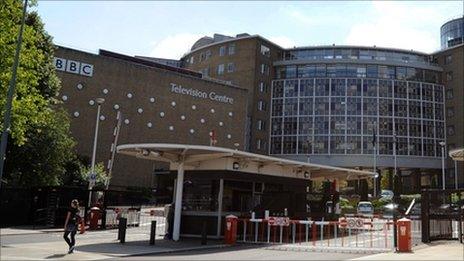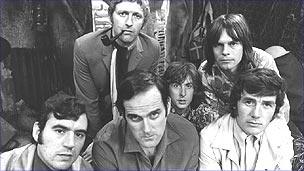BBC TV Centre to include hotel, flats and offices
- Published

The BBC announced in 2007 it wanted to sell TV Centre
London's BBC Television Centre is to be developed into a hotel, flats and offices but will also see the broadcaster make programmes in three of its studios.
The £200m development plans for the historic site have revealed the building's forecourt will be opened up to the public.
The main circular building, known to BBC employees as "the doughnut", will become a hotel and apartments.
Studios 1, 2 and 3 will be refitted.
Other buildings will be transformed into offices and houses and the 14-acre site will also house the BBC's commercial arm, BBC Worldwide.
David Camp, chief executive of developers Stanhope, external, said: "The BBC will continue to have a significant presence at Television Centre and we will be bringing new life into the site with new public routes, spaces and uses."
A statement on Stanhope's website said that some offices would be "aimed at occupiers in the creative sector providing new employment opportunities", adding that there will be "a variety of public uses, including a cinema, health club, restaurants and cafes, which will benefit the local community".

Monty Python was filmed at TVC
It said the "much-loved listed buildings at Television Centre will be retained", and these include the main circular building and the front flank of Studio 1, which are Grade II listed.
The BBC said six years ago that it wanted to sell the famous west London building, which opened in 1960 and played a central role in its history.
Programmes recorded there include Fawlty Towers, Monty Python's Flying Circus, Blue Peter and Strictly Come Dancing, as well as earlier series of Doctor Who.
Other developments for the site include replacing the drama block, restaurant block and multi-storey car park with new residential buildings and townhouses. The East Tower will be replaced with a more slender and differently positioned residential building.
The south of the site will also feature a "village green" of town houses for families with private rear gardens.
Television Centre was built on the former site of the 1908 Franco-British Exhibition and was designed by the architects Norman and Dawbarn, appearing like a question mark in shape.
- Published14 January 2013
- Published6 July 2012
- Published14 June 2011
- Published28 June 2011